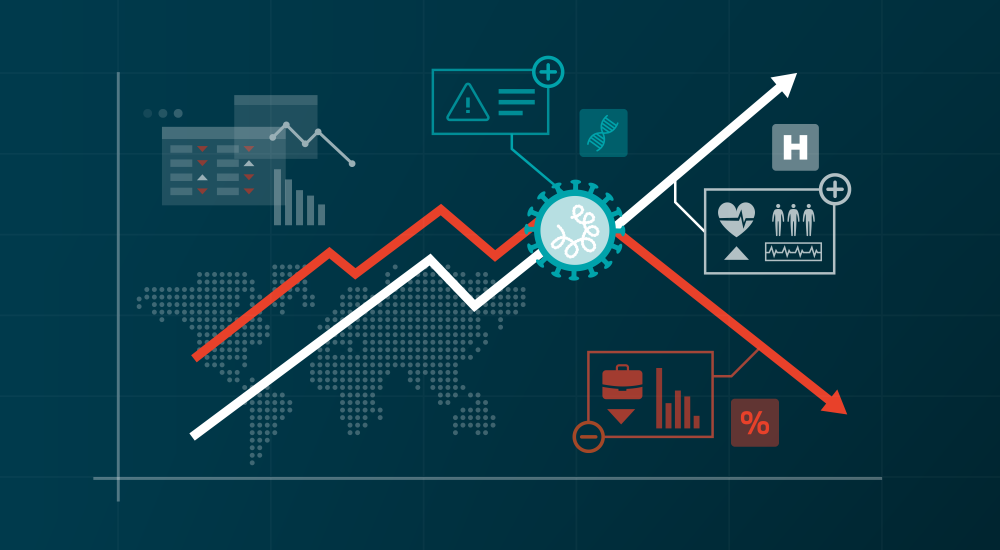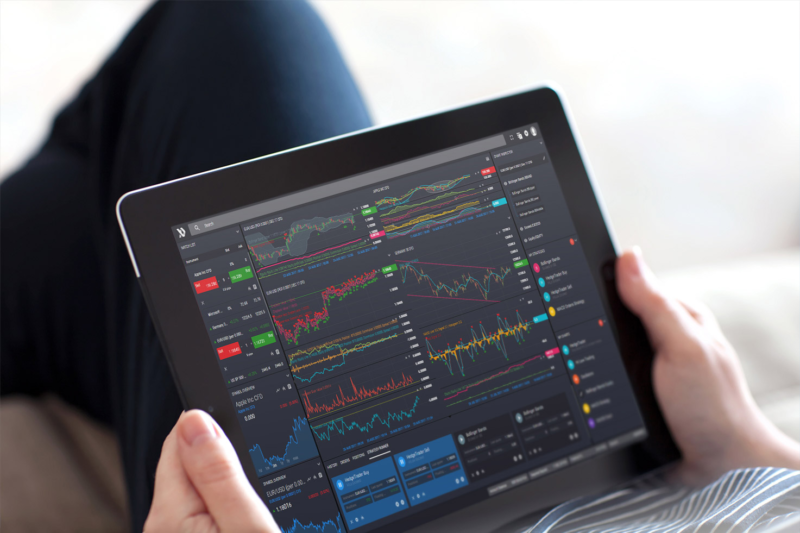It’s been a volatile year so far, and we’re only 6 months in.
The markets looked pretty shaky in January and February when they plunged more than -11% in one of the worst starts to a year ever. But then they just as quickly made it all back and then some.
The Brexit vote’s surprise outcome the other week sent stock reeling once again. But within days, the markets were right back to where they were when they started.
After all of the market’s machinations, the S&P is now up 2.89%.
Even though the bears were growling each time the market pulled back, the bulls won out as they have been doing since this bull market began in March 2009.
And now it looks like the markets are poised for a massive breakout sending stocks to brand new all-time highs.
Fundamentals
The fundamentals of the market look strong.
It’s true that Q1 2016’s GDP gave pause to the market with its advance estimate of only 0.5%. (This was in sharp contrast to Q4 2015’s 1.4% reading.) But the revised Q1 ’16 estimate a month later showed the economy did better than originally thought at 0.8%. Then, just last week, the final estimate for Q1 GDP showed the economy grew by 1.1%, which was even better than all of the Q1 estimates along the way.
But historically, at least over the last couple of years, Q1 has been notoriously weak, only to surge higher in the next quarter. Take Q1 ’14 for example, which came in at -0.9%, but then exploded higher in Q2 with a 4.6% print; or Q1 ’15 at just 0.6%, which was then followed by a Q2 growth rate of 3.9%. Both of those years saw the S&P trek higher as the US economy continued to expand.
We won’t get Q2 ‘16’s GDP estimate until July, 29th. But the Federal Reserve Bank of Atlanta’s ‘GDP Now’ forecast is putting it at 2.6%, painting a picture of a strengthening US economy.
Underscoring this is the robust Employment numbers showing unemployment at a 9 year low at 4.7%, with an average of nearly 200,000 new jobs created each month over the last year.
Consumer Confidence is also strong at 98.0, putting it within just a few points of its best reading since this bull market began. A strong consumer is an important metric when you consider that consumer spending accounts for roughly 70% of the US economy.
The list of improving economic reports goes on and on, from Manufacturing, to Services, to Housing, and more.
Let’s also not forget what the professional investors are doing since they are the ones who truly move the market. And one look at the State Street Investor Confidence Index (which tracks actual buying and selling of stocks from institutional investors), shows that the smart money is still bullish. A reading above 100 shows portfolio managers adding equities to their portfolios, which is a sign of confidence in the market. The latest report showed a combined reading of 105.9 with all three major regions including North America, Asia, and Europe, all recording scores above the 100 threshold.

Technicals
The technicals of the market are also strong.
When the market plummeted in the beginning of the year, I remained confident that it was nothing more than a long overdue correction, rather than the start of a bear market.
Why? For one, a bear market doesn’t officially even begin until the market falls by at least 20%. And from its peak in May of 2015 to its lows in Feb. of 2016, it was ‘only’ down -15.21% at its worst.
But why was I so confident the market was going to turn around? The chart said it all.
In the chart below (long-term weekly chart), you can see a trendline drawn from the lows in March of 2009 (beginning of the bull market) to the second point of the trendline in October 2011 (the lowest point following the highest high that preceded it). That trendline remained intact for the entire bull move, but had not yet been tested since those two points were established.
Knowing that a mature trend should successfully test that trendline at least once after it’s been established (resulting in at least three touch points), said to me that we’d find strong support at that level, which was just under the 1,800 mark.
As it approached that line, getting as low as 1,810.10 on February 10th, the market showed its resilience and strongly bounced backed. The Relative Strength Index oscillator at the bottom of the chart also foreshadowed the rally to come as it flashed bullish divergence while the market took out last August’s correction lows, and January’s lows as well, but registered ‘higher lows’ on its RSI readings. (The ‘higher low’ RSI readings while the market is making ‘lower lows’ in price shows it’s being made on less strength and conviction.)
Within the next 11 weeks, it soared 16.63%, closing higher in all but 3 of those spectacular weeks as it regained the closely watched 2,100 level.
Currently, the market remains above 2,100, and is above the downward slanting resistance line that connects the all-time high from May ’15, to the reactionary high in November ’15, to last month’s high in June ‘16. And with the market trading above all of its moving averages (10-day, 20-day, 50-day, and 200-day moving averages), it appears to have the momentum at its back to push onto new highs.
Targets
I’m expecting the market to make new all-time highs by the end of this upcoming earnings season (if not sooner). With the market only 1.49% from the old highs, it won’t take much to do so.
Why earnings season? For one, it’s been a great catalyst to propel the market higher. Over the last 29 earnings seasons (going all the way back to Q1 2009 when the bull market began), the median return for the S&P 500 was 2.35%. And 21 out of the last 29 periods (72%) were winners.
Moreover, there’s a greater chance (70%) of having a positive earnings season if the last earnings season was positive as well. And last earnings season saw the market up 2.38%.
Combine that with all of the good news out there both fundamentally and technically and it’s hard to come up with a good reason why it won’t make new highs.
Some may point to Brexit fears as potentially holding the market back. But, I’m highly skeptical it will even happen. And the narrative that’s taking shape right now suggests that the powers that be are looking for a political way to walk that non-binding referendum back and stay within the EU. But even if it does happen, Article 50 isn’t expected to be triggered for at least 3 months until a new Prime Minister is elected (or possibly not even until next year). And from that point, the Brexit still won’t go into effect until a two-year long process takes place for Britain and the EU to negotiate new trade agreements that will govern economic, labor, and immigration activity once they leave.
Even though it appeared as if everything had changed over there with the recent vote, in all actuality, it doesn’t seem like anything has changed at the moment, and maybe never will.
When the market finally does breakout, I’m expecting it to be big and fast. With bullish sentiment from retail investors at an 11 year low, and neutral sentiment at a 16 year high, there are a lot of people expected to pile into the market once this happens in a fear-of-missing-out-rush to get back in.
I’m expecting a move to 2,250 and even 2,300 to take place by year’s end, which would represent anywhere from a nearly 7% gain to more than a 9% gain from current levels.
And if that’s what’s in store for the indexes, then there are even bigger gains to be seen in the right individual stocks.
Three Picks for the Coming Breakout
Here are three picks that should benefit from the upcoming breakout and are poised to gain even more in the process.
1) iShares Russell 2000 Small-Cap ETF (IWM)
The iShares Russell 2000 Small-Cap ETF tracks the performance of the Russell 2000 Index. It represents virtually all the different sectors, but with a greater weighting towards the more aggressive Technology (16.69%), Financial Services (16.23%), Industrials, (13.39%), and Healthcare (13.33%) sectors, which make up nearly 60% on the index.
Granted, it holds thousands of stocks (hence the 2000 part of its name), but the ETF’s top 10 holdings are: Steris (STE), CubeSmart (CUBE), Treehouse Foods (THS), West Pharmaceutical (WST), MarketAxess (MKTX), Tyler Technologies (TYL), Sovran Self Storage (SSS), Manhattan Associates (MANH), Piedmont Natural Gas (PNY), and Vail Resorts MTN).
As far as valuations go, it has an average P/E ratio of 19.65 (just above the S&P’s 18.57), a P/B ratio of just 1.84 (below the S&P’s 2.57), and a P/S ratio of only 1.10 (vs. the S&P’s 1.80).
Performance-wise, the Russell has some catching up to do to the broader market. While the S&P is up 2.89% YTD, the Russell is only up 1.02%. And even though the broader market is just 1.49% away from their all-time highs, the Russell has to rally 10.74% to match their best levels. But that’s exactly what I’m expecting them to do and then some with a price target of 1,350 by the end of the year for a potential gain of 16.70%.
2) Lowe’s (LOW)
Lowe’s Companies is a retailer of home improvement products with a special emphasis on retail do-it-yourself and commercial business customers. They offer products and services that cover virtually every area of your home improvement needs including home décor, home maintenance, home repair, lawn & garden care, and more. They also provide solutions for commercial buildings and customers as well.
They are a Zacks Rank #2 Buy, with a VGM Score of A, in an industry (Building Products-Retail/Wholesale) ranked in the top 7% of Zacks Ranked Industries. With retail and housing/construction both doing well, this is a great stock to straddle both spaces.
Valuation-wise, they also have a Style Score rating of A, which is underscored by their industry beating and market beating PEG ratio of 1.27 vs. 1.48 and 1.79 respectively. Their P/S ratio also comes in below the market at 1.11 vs. the S&P’s 1.80. And growth-wise (also an A rating), they’re outperforming the market as well with a projected sales growth rate of 7.27% and projected earnings growth of 22.47% in comparison to the S&P’s sales and earnings outlook of 2.83% and 5.95%.
Looking at their chart, you can see they have traced out a large bullish rectangle pattern for more than a year. They finally broke out to the upside in May, although they quickly retested (albeit successfully) their old resistance area turned new support, before shooting back up. My short-term price target over the next 3 months comes in at $89.90 for a 12.94% increase. Longer-term, over the next 6-12 months, I’m looking for a move to $102.50 (before it goes even higher) for a potential gain of more than 28%.
3) Thermo Fisher Scientific (TMO)
Thermo Fisher Scientific, headquartered in Waltham, Massachusetts, is in the Medical Instruments industry and they provide analytical instruments, equipment, reagents & consumables, software, and services for research, manufacturing, analysis, discovery, and diagnostics.
They are a Zacks Rank #3 Hold, but their industry is ranked in the top 37% of Zacks Ranked Industries. The Healthcare industry is also one of the top job creators generating more than 487,000 new jobs over the last 12 months making it the top job creating sector. And more new jobs goes hand in hand with an increase in economic activity to warrant all the new hiring. And an increase in economic activity usually means more new sales and an increase in earnings.
You can see this in their projected sales growth numbers at 5.88% (which is more than double the S&P) and their projected EPS growth at 9.97% (which is nearly a 70% lift over the market). And all the while their net margins are coming in at 11.49%, beating both the broader market and their industry.
Chart-wise, they too have been tracing out a large bullish rectangle pattern before recently breaking out to the upside. But the recent Brexit inspired pullback sent TMO back down to successfully retest their previous breakout point (which was not that far off from their supporting 200-day moving average either). Since then, TMO has bounced back nicely and are poised to continue their gains. They report earnings on 7/27 and that could be the catalyst to send prices to new all-time highs. And with 28 positive EPS surprises in a row, I’m betting they positively surprise once again. My near- term price target is focused on $164 for a 9.90% increase, while longer-term I’m looking for $190 for a potential gain of over 28%.
Summary
Even though this bull market has gone on for more than 7 years now, I don’t think it’s about to stop anytime soon.
And we’re still years away for it to become the longest running bull market in history.
But history is being made right now. And this bull market’s story is still being told.
Could some of the economic numbers be better than they are? Of course. But the slower growth (key word being growth), and lack of excesses in the economy, has elongated the typical 5 year boom and bust cycle to a potential 8-10 year cycle if not longer.
Also, when you stop to consider the earnings yield on the S&P 500 (5.70% using F1 Estimates) in comparison to the yield on the 10-year Treasury (1.46% and seemingly going lower), there’s almost nowhere else to go to get a better return than stocks.
For stocks to be considered the better value, their risk-based earnings yield should trade at least at a 200 basis point premium to the 10-Year’s risk-free return. With the S&P’s earnings yield trading at more than a 400 basis point premium, stocks should enjoy exceptional demand for a long time to come.
Make sure you’re positioned for the potential upcoming breakout and be a part of history.
Thanks and good trading.



